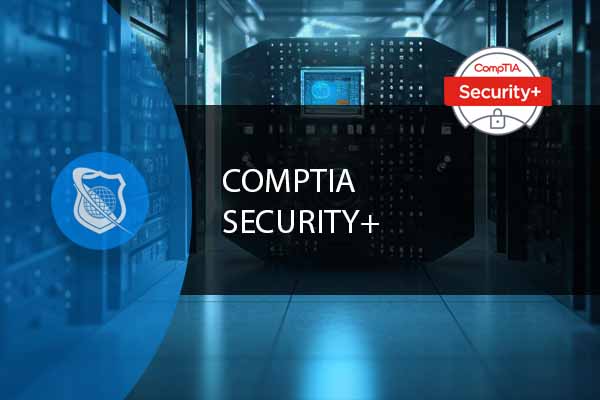The Critical Role of Risk Management in CompTIA Security Plus
Welcome to the sixth installment of our 7-part series focusing on CompTIA Security Plus. Today, we’re diving into the domain of “5.0 Risk Management,” a topic that is not only essential for passing the CompTIA Security Plus exam but also for establishing a robust cybersecurity posture in any organization. Within the first few paragraphs, you’ll understand why mastering risk management is a cornerstone of cybersecurity. Risk management is integral to maintaining a strong security posture and is a key component of any comprehensive cybersecurity strategy.
| Domain | Percentage of Examination | Key Subtopics |
|---|---|---|
| 1.0 Threats, Attacks and Vulnerabilities | 21% | Malware Types, Types of Attacks, Threat Actors |
| 2.0 Technologies and Tools | 22% | Network Components, Software Tools, Troubleshooting |
| 3.0 Architecture and Design | 15% | Frameworks, Network Architecture, Systems Design |
| 4.0 Identity and Access Management | 16% | AAA, Multifactor Authentication, Account Management |
| 5.0 Risk Management | 14% | Policies, Business Impact, Risk Assessment |
| 6.0 Cryptography and PKI | 12% | Symmetric Algorithms, Asymmetric Algorithms, Hashing |
Secure Your Networks and Prevent Password Breaches
Our robust CompTIA Sec+ course is the perfect resouce to ensure your company’s most valuable assets are safe. Up your security skills with this comprehensive course at an exceptional price.
Why Risk Management is Essential in CompTIA Security Plus
Risk Management is the art and science of identifying, assessing, and mitigating risks in an organization’s cybersecurity landscape. It’s not just about preparing for your CompTIA Security Plus exam; it’s about implementing effective risk management strategies that can adapt to an ever-changing threat environment. Understanding the threat landscape and conducting regular risk assessments are vital steps in this process.
The Multifaceted Nature of Risk Management
Risk management is not a one-size-fits-all approach. It involves a variety of methods and strategies, from qualitative and quantitative risk assessments to the implementation of security controls and disaster recovery plans. The goal is to minimize vulnerabilities and enhance your organization’s security posture.
Adaptability is Key
The cybersecurity landscape is constantly evolving, with new threats emerging daily. An effective risk management strategy must be adaptable and flexible to mitigate these risks. Regular audits, another key aspect of risk management, ensure that your strategies are up-to-date and aligned with current compliance and regulations, such as GDPR and HIPAA.
Employee Training and Security Awareness
One of the most overlooked aspects of risk management is employee training. Human error is often the weakest link in a security chain. Regular training sessions on security awareness can significantly reduce the risk of incidents like phishing attacks or unauthorized access.
Real-world Applications
Mastering the art of risk management has real-world applications that go beyond the scope of the CompTIA Security Plus exam. Whether you’re a cybersecurity consultant tasked with assessing vulnerabilities or an IT manager responsible for implementing an incident response plan, the skills and knowledge you acquire are invaluable.
Secure Your Networks and Prevent Password Breaches
Our robust CompTIA Sec+ course is the perfect resouce to ensure your company’s most valuable assets are safe. Up your security skills with this comprehensive course at an exceptional price.
Core Concepts in Risk Management for CompTIA Security Plus
Risk Assessment Methods: The Foundation of Risk Management
Understanding different methods for assessing risks is crucial for anyone preparing for the CompTIA Security Plus exam or working in the cybersecurity field. Risk assessments can be either qualitative or quantitative. Qualitative assessments focus on identifying the types of risks and their potential impact, often using a high-medium-low scale. Quantitative assessments, on the other hand, aim to assign numerical values to risks, making it easier to prioritize them. Both methods are essential tools in the risk management toolkit and are covered extensively in the CompTIA Security Plus curriculum [1].
Risk Mitigation Strategies: More Than Just Firewalls
Risk mitigation is the next step after risk assessment. It involves implementing various strategies to mitigate identified risks. These can range from technical solutions like firewalls and intrusion detection systems to organizational measures like security policies and disaster recovery planning. Understanding how to tailor these strategies to specific risks is a key aspect of CompTIA Security Plus and is vital for real-world application.
Compliance and Regulations: Navigating the Legal Landscape
In today’s global business environment, understanding the legal landscape is essential for effective risk management. Laws and regulations like the General Data Protection Regulation (GDPR) in Europe and the Health Insurance Portability and Accountability Act (HIPAA) in the United States set the standards for data protection and privacy. Non-compliance can result in hefty fines and reputational damage. Therefore, being well-versed in these regulations is not just a requirement for the CompTIA Security Plus exam but also a crucial aspect of corporate governance.
Best Practices in Risk Management for CompTIA Security Plus
Regular Audits: The Pulse Check of Your Security Posture
Conducting regular audits is essential for identifying vulnerabilities, ensuring compliance, and maintaining a robust cybersecurity posture. These audits can range from internal reviews to third-party assessments and are a critical component of risk management. They help organizations align with industry standards and regulations, which is not just a best practice in CompTIA Security Plus but also a requirement for maintaining corporate integrity and customer trust.
Incident Response Planning: Your First Line of Defense
Having a well-defined incident response plan is crucial for managing risks effectively. This plan should outline the steps to take when a security incident occurs, from initial detection to resolution and post-incident analysis. Effective incident response can minimize damage and reduce recovery time, making it a key focus in the CompTIA Security Plus exam and a best practice in the cybersecurity industry.
Employee Training: The Human Firewall
Training employees on security awareness is a key aspect of risk management. Human error is often the weakest link in a security chain, making employee education vital. Training programs should cover topics like phishing awareness, password management, and safe internet practices. This not only aligns with CompTIA Security Plus guidelines but also significantly enhances an organization’s overall security posture.
Real-world Applications: Beyond the CompTIA Security Plus Exam
Mastering risk management has real-world applications that extend far beyond the scope of the CompTIA Security Plus exam. Whether you’re a cybersecurity consultant, an IT manager, or a chief information security officer (CISO), the skills and best practices you acquire in this domain are invaluable. From conducting thorough risk assessments to implementing robust incident response plans, these competencies are directly applicable to safeguarding an organization’s digital assets against evolving cyber threats.
Secure Your Networks and Prevent Password Breaches
Our robust CompTIA Sec+ course is the perfect resouce to ensure your company’s most valuable assets are safe. Up your security skills with this comprehensive course at an exceptional price.
Conclusion: The Integral Role of Risk Management in CompTIA Security Plus
As we conclude this comprehensive guide to risk management, it’s clear that this domain is not just a theoretical concept to be memorized for an exam. It’s a practical skill set that has a direct impact on an organization’s cybersecurity posture. Implementing effective risk management strategies is essential for identifying vulnerabilities, ensuring compliance, and mitigating threats. With the knowledge gained from this blog, you’re not just one step closer to acing your CompTIA Security Plus exam; you’re also well-equipped to be a proactive defender in the ever-changing landscape of cybersecurity risks.
CompTIA Security+ Risk Management FAQ
What is Risk Management in CompTIA Security+ Certification Context?
Risk Management in the CompTIA Security+ certification refers to the identification, evaluation, and prioritization of risks followed by coordinated and economical application of resources to minimize, monitor, and control the probability or impact of unfortunate events or to maximize the realization of opportunities. The process is fundamental for ensuring an organization’s information security and involves strategies such as risk assessment, risk mitigation, and ongoing risk monitoring.
How does the CompTIA Security+ Certification Address Risk Analysis?
The CompTIA Security+ Certification addresses risk analysis by teaching candidates how to perform and interpret risk assessments, which involves identifying vulnerabilities and threats, determining the likelihood of occurrence, and the potential impact on the organization. It emphasizes understanding qualitative and quantitative risk analysis techniques to prioritize risks based on their severity and potential impact on information security.
What are the Key Components of a Risk Management Framework in the CompTIA Security+ Syllabus?
The key components of a Risk Management Framework (RMF) in the CompTIA Security+ syllabus include risk identification, risk assessment (both qualitative and quantitative), risk response (acceptance, mitigation, transfer, or avoidance), and continuous monitoring. These components are crucial for establishing a structured approach to managing cybersecurity risks and ensuring that risk management practices are integrated into the organization’s overall security strategy.
Can you Explain the Importance of Risk Mitigation Strategies in CompTIA Security+ Risk Management?
Risk mitigation strategies are vital in CompTIA Security+ Risk Management as they help reduce the potential impact of identified risks to an acceptable level. These strategies include implementing security controls, adopting best practices for information security, conducting regular security training and awareness programs, and developing incident response plans. Effective risk mitigation ensures that an organization can protect its assets, data, and reputation from potential security threats.
How is Continuous Monitoring Integrated into CompTIA Security+ Risk Management Practices?
Continuous monitoring is integrated into CompTIA Security+ Risk Management practices by requiring organizations to regularly review and assess their security controls, vulnerabilities, and threat environment. It involves the ongoing observation of the effectiveness of implemented security measures and the identification of any changes in the organization’s risk profile. This proactive approach ensures that risk management efforts are up-to-date and can adapt to new threats, vulnerabilities, and business requirements, maintaining the security posture over time.
Explore Our Comprehensive 6-Part Series on CompTIA Network+ Exam Domains
Dive deep into the world of networking with our extensive 6-part blog series designed to be your ultimate guide for the CompTIA A+ Exam. Each blog focuses on a specific domain, providing expert insights, study tips, and real-world applications to help you master the subject and ace the exam. Click on the titles below to explore each domain in detail.
CompTIA Security+ Certification: Your Ultimate Guide (1 of 7 Part Series)
CompTIA Security+ Objectives : Threats, Attacks and Vulnerabilities (2 of 7 Part Series)
CompTIA Security: Technologies and Tools (3 of 7 Part Series)
Security CompTIA : Architecture and Design (4 of 7 Part Series)
CompTIA Security +: Identity and Access Management (5 of 7 Part Series)
CompTIA Security Plus : Risk Management (6 of 7 Part Series)
Security CompTIA + : Cryptography and PKI (7 of 7 Part Series)

























